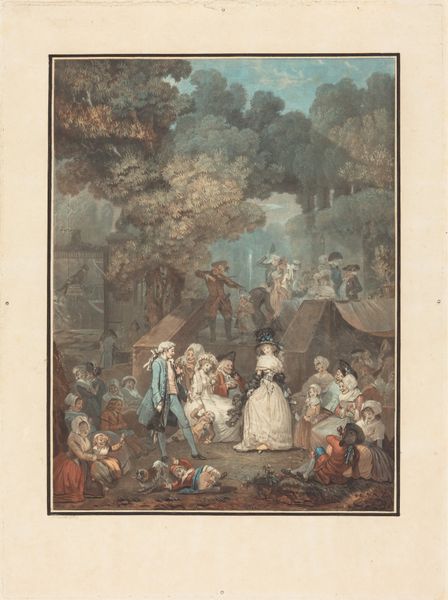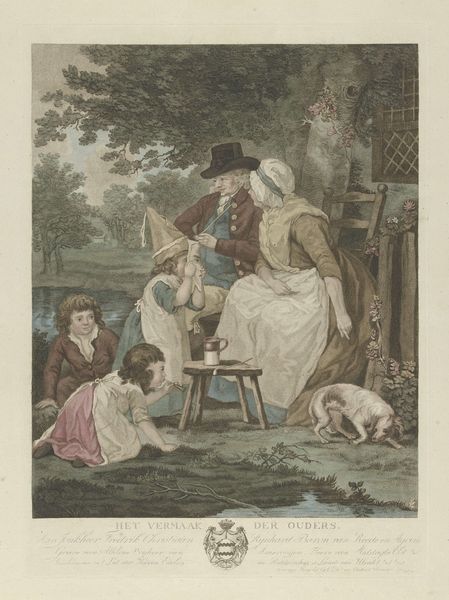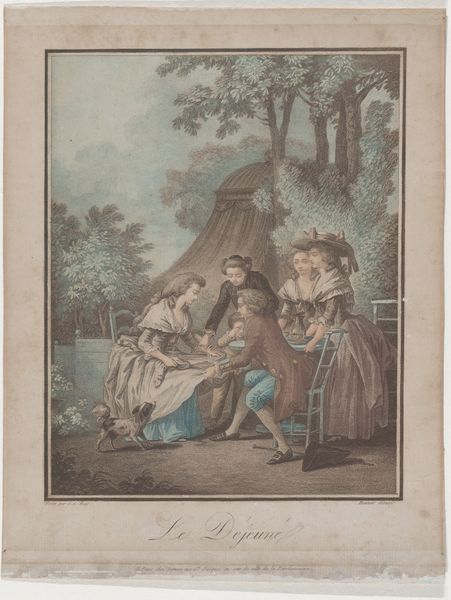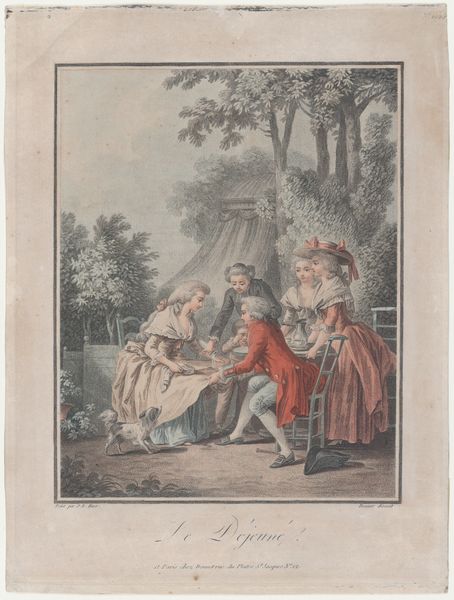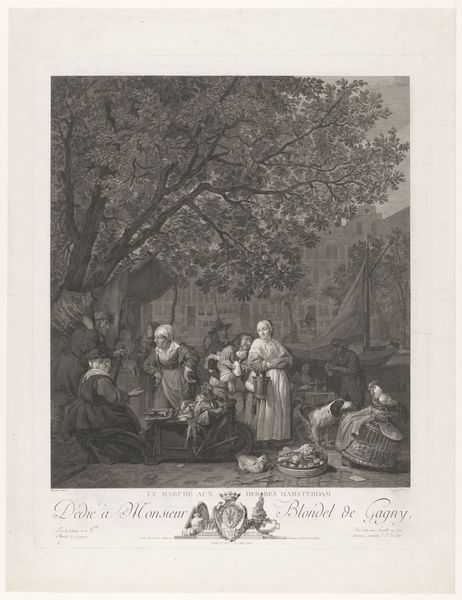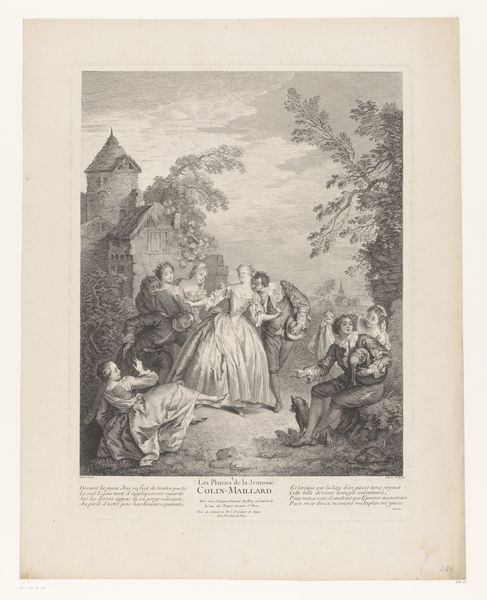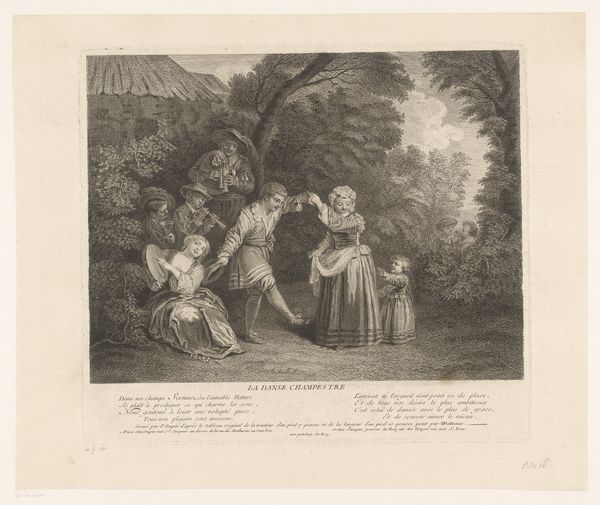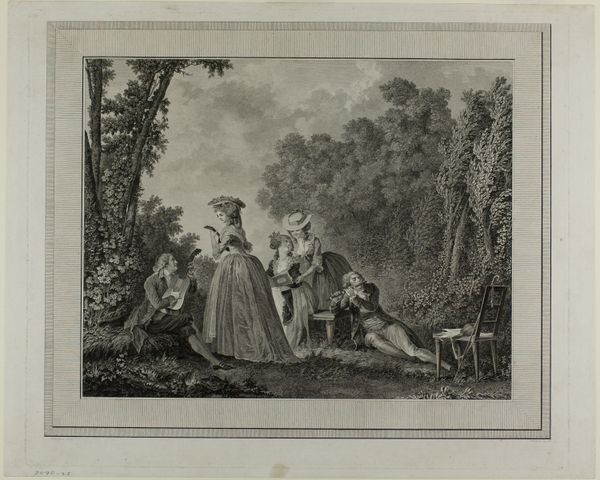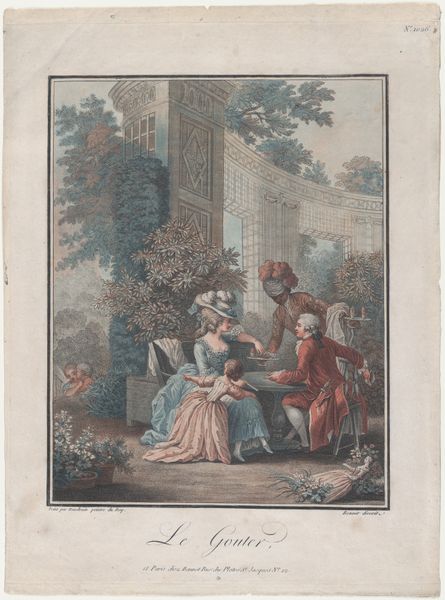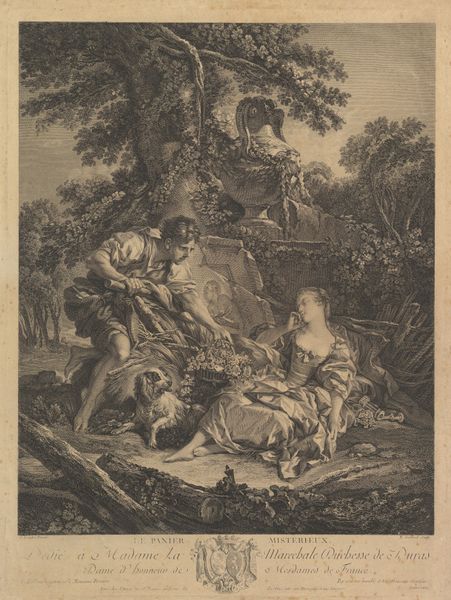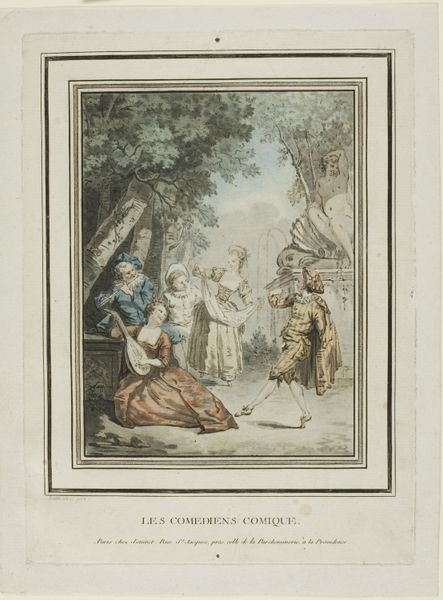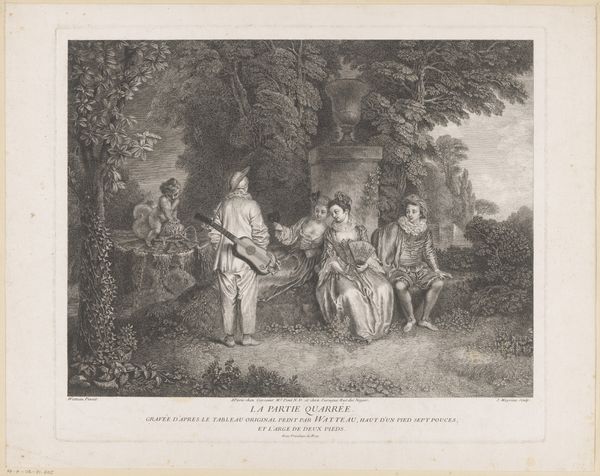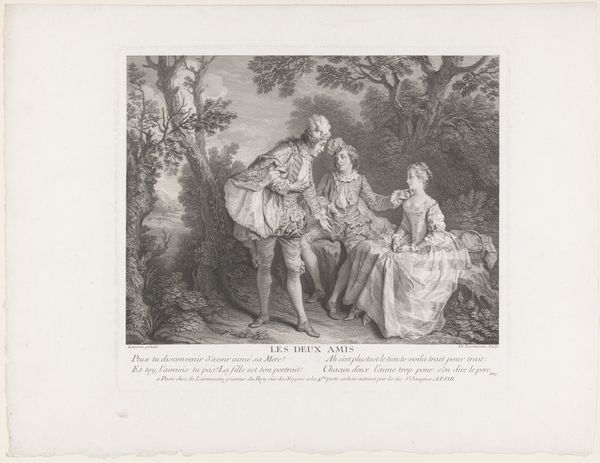
Dimensions: 271 × 232 mm (image); 382 × 274 mm (sheet)
Copyright: Public Domain
Editor: This is "Annette and Lubin" by Louis Philibert Debucourt, made in 1789. It's a print – an etching, I believe – on paper, currently at the Art Institute of Chicago. The scene feels very staged, theatrical even. What compositional elements strike you the most in this work? Curator: The most salient feature of this work is the clear division and interplay between light and shadow. The artist masterfully uses illumination to draw our attention to the central figures, contrasting sharply with the darker, wooded background. Notice the subtle gradations in tone, achieved through the intaglio technique, that model form and create depth. How does this interplay of light and shadow affect your reading of the subject matter? Editor: It does create a sort of… spotlight effect, focusing on the interaction between the figures and really emphasizing the narrative. The two figures on the right are dressed in a style that contrasts significantly with the young girl in white. Curator: Precisely. Consider the lines used. The sharp, precise lines defining the clothing and figures versus the softer, more diffuse lines used to depict the foliage. These differing linework styles create a visual hierarchy. Note the arrangement of the figures, they form a kind of pyramid, don't you agree? How does this formal arrangement shape our understanding of the power dynamics within the scene? Editor: It does feel pyramidal! Putting the two men on top really reinforces the feeling of… imbalance? Curator: An astute observation. Furthermore, look closely at the use of color. The muted palette, punctuated by subtle highlights, creates a sense of delicate elegance. Editor: It’s interesting how a formalist reading can still point to themes of social imbalance through the language of line and shape. Curator: Exactly! Analyzing these formal choices allows us to understand how the artist uses visual language to convey meaning and elicit a response from the viewer. By examining the structure of the image, we gain insights into its narrative, its cultural context, and ultimately, its aesthetic power.
Comments
No comments
Be the first to comment and join the conversation on the ultimate creative platform.
